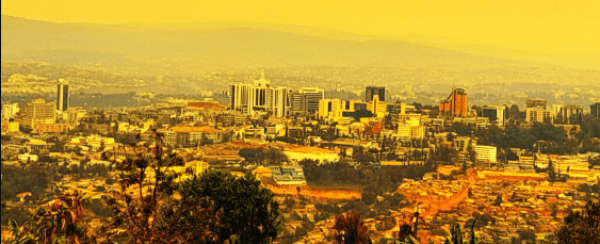By Michael Mascarenhas, author of Toxic Water, Toxic System: Environmental Racism and Michigan’s Water War
My new book, Toxic Water, Toxic System is not just the story of how the state failed Black communities in Michigan—poisoning an entire city and shutting off water to thousands of people. It’s an invitation to scholars and activists to think more deeply about the methods they use, the frameworks that guide their analysis, and their politics regarding environmental justice.
Toxic Water, Toxic System is first a model on how to conduct community-engaged research for environmental justice. I wrote the book to elevate community voices and their environmental justice efforts for safe and affordable drinking water in majority Black cities in Michigan.
It brings together years of collaborative fieldwork methods with community activists fighting against austerity policies that have targeted BIPOC communities for financial reform. I center the frontline communities most directly affected by water contamination and water shut-offs. And while racialized austerity policies of the state have created multiple and intersecting forms of water precarity for poor and communities of color in Michigan, I have not limited my analysis to the damages inflicted on the communities targeted for financial disciplining. Instead, I use a desire-based research framework[1] to elevate the efforts and voices that were not only instrumental in resisting the state’s austerity policies, but also provided care in time of need, participated in citizen efforts, and invited United Nations officials to examine the water shut-off policies in Detroit. Local communities’ organizing was transformative in bringing environmental justice to Michigan.
To spotlight activist voices, I invited Monica Lewis Patrick and Debra Taylor of We the People of Detroit to be keynote speakers at a symposium[2] at Rensselaer Polytechnic Institute in the Fall of 2016. The symposium was an effort to raise the awareness of the mostly disaffected academy and its student body of the water crises in Flint and Detroit. I also took community members’ concerns to Dr. Agustin Arbulu, Executive Director of Michigan Department of Civil Rights and gave expert testimony at the third public hearing on the Flint Water Crisis to Michigan’s Civil Rights Commission on September 8th, 2016.[3] In September of 2018, Monica Lewis Patrick (We the People of Detroit) and Flint water warrior Claire McClinton, together with scholars Ben Pauli (Kettering University), Stephen Gasteyer (Michigan State University), and myself presented on a panel about research justice and community empowerment at the third annual Summit of the Michigan Environmental Justice Coalition. And as a gesture of reciprocity, all royalties from the the bookwill be donated to We the People of Detroit to support their future efforts for environmental justice. All of these efforts ensured that the book was not just documenting the activism taking place, but actively supporting the community’s environmental justice efforts.
Another goal of this ethnography is deepening the discourse around environmental justice by examining its intersections with white supremacy. My research indicates that environmental justice studies often haven’t fully considered how white supremacy and current trends in racial discrimination contribute to supporting white neo-conservative policies. Both factors have played a significant role in making racial and environmental inequality possible in Flint and Detroit. In Toxic Water, Toxic System, I use a conjunctural analysis to show how “racial expendability,” supports a particular form of state-driven white supremacy to profit from the environmental peril of people of color.[4] What I contribute to critical environmental justice studies is a deep dive into how particular actors, groups, and social networks mobilize both racial capitalism and white supremacy in operationalizing the state’s austerity-driven reforms.[5][6][7] Toxic Water, Toxic System makes explicit the racial, ethnic, and gendered forms of environmental injustice that culminate from the collective, intersecting, and multi-scaler consequences of a seemingly anonymous authoritarian state willing to maintain white supremacy at any cost. As Professor David Pellow, author of What Is Critical Environmental Justice? writes, the book is “a clarion call to use bolder, more accurate language to confront environmental racism as intentional actions perpetrated by elites in the service of white supremacy, vulture capitalism, and genocide.”
[1] Tuck, Eve. Suspending Damage: A Letter to Communities. Harvard Educational Review: 79(3). Pp 409-427.
[2] The title of the symposium was TOXIC WATER. The Poisoning of Flint, Shut-offs in Detroit, and the Looming Water Crisis in American Cities.
[3] https://www.michigan.gov/mdcr/commission/flint-water-hearings#:~:text=After%20a%20year%2Dlong%20investigation,and%20all%20races%20were%20victims.
[4] Pellow, D. N. (2020). Black Lives Matter as an Environmental Justice Challenge. In M. Mascarenhas (Ed.), Lessons in Environmental Justice. From Civil Rights to Black Lives Matter and Idle No More (pp. 306-321). Thousand Oaks, CA: Sage Publishing Inc.
[5] Pulido, L. (2017). Geographies of Race and Ethnicity II: Environmental Racism, Racial Capitalism and State-sanctioned Violence. Progress in Human Geography, 41(4), 524–533.
[6] Pellow, D. N. (2018). What is Critical Environmental Justice? Medford, MA: Polity Press.
[7] Pellow, D. N. (2020). Black Lives Matter as an Environmental Justice Challenge. In M. Mascarenhas (Ed.), Lessons in Environmental Justice. From Civil Rights to Black Lives Matter and Idle No More (pp. 306-321). Thousand Oaks, CA: Sage Publishing Inc.




